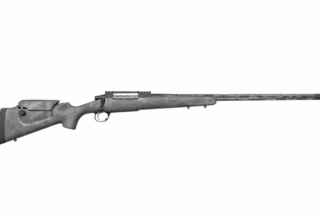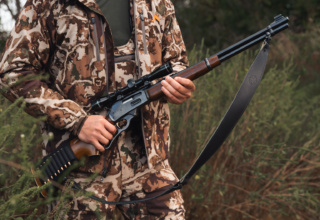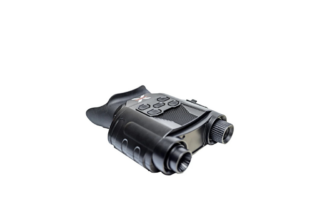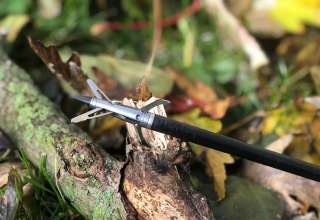Shooting heavier carbon arrows offers many real-world benefits. Bowhunters of the early 1990s discovered this with the first Beman pulltruded shafts, skinny, thick-walled arrows delivering concentrated mass, but including some inherent problems. Before pulltruded there was aluminum alloy. Alloy carried required mass but was slow to recover from launch paradox, flexing again on impact to slow penetration by slapping wound channels while trailing broadheads. Carbon recovers from harmonic oscillations faster, settling into straight, rotational flight in a shorter distance after release, tracking broadheads through wound channels more precisely after impact. These are advantages found in every carbon arrow.

For years following original Beman ICS Hunter arrow introduction in the late ‘90s (they’ve continually improved since) carbon arrows remained uniformly lightweight—around 7.5 to 8.5 grains per inch (gpi) in the most popular .340 deflection. It didn’t matter what brand/model carbon you purchased, pure-carbon shafts remained within these parameters for at least a decade due to limitations in materials and manufacturing processes. About 10 years ago carbon slowly began gaining weight. This was spawned largely by increasing levels of energy produced by compound bows—allowing shooting heavier arrows while maintaining accustomed velocities—but also an awakening by increasingly-savvy bowhunters regarding the advantages involved.
Easton’s Axis started it all, proprietary Hidden Insert Technology (H.I.T.) allowing shafts with thicker walls and slimmer profiles (X-Nock/.205-inch ID, 5mm), creating a package of more concentrated mass. Next came Easton’s Full Metal Jacket (FMJ), wrapping space-age carbon cores with alloy jackets to provide the best of new and old, including alloy mass, in 5mm diameter. Finally came Injexions, even slimmer shafts (G-Nock/.168-inch ID, 4mm). These 4mm shafts—including Carbon, A/C and FMJ Injexion—include Steel-G H.I.T. inserts, the slimmest diameters around and highly-concentrated mass around 10 to 11 gpi in .330-.340 deflections. Those clinging to speed as the be-all measure of arrow performance might have cried foul, but serious bowhunters immediately seized on the benefits.
Shot Silence
If you ignore all else, considering only shot silence, heavy arrows really shine. You sacrifice 5-7 fps for every 25 grains of mass added to arrows. Shoot 475-grain arrows (Easton FMJ 340) instead of 375-grain speed arrows and you’ve sacrificed 20-28 fps (not much in the age of 325-plus fps compounds), boosted kinetic energy, and made your bow much quieter. Heavy arrows absorb more of a bow’s available energy, eliminating escape energies which translate directly into vibrations and shot noise. In bowhunting silence is golden. When bowhunting jumpy big game; giving them nothing to react to via quieter, heavier arrows is always superior to attempting to beat them to the (string) jump with speed.
Penetration
I conduct all bow testing for the No.1 archery trade magazine in the industry. Our test-arrow group consists of 12 shafts ranging from 510 to 305 grains finished weight (all accessories installed). Every time I test a new bow it’s easy to see how heavier arrows translate directly into increased energy, despite velocity being squared in the standard kinetic-energy formula (Arrow Mass X Velocity2 ÷ 450,240 = K.E.). Kinetic energy is an imperfect measure of arrow energy (momentum is more indicative) but is what the industry chose, but it’s safe to say that higher numbers spell more penetration potential.

So, counter-intuitive as it may sound, for those shooting limited K.E.—youth, women or those with physical limitations like a ruined rotator cuff—heavier arrows are the answer to reliable penetration, not faster, lighter ones. When pursuing big stuff, like elk or moose, I choose the heaviest arrows possible within deflection requirements because they provide insurance against accidental bone hits.
Reliability
Hand in hand with penetration potential comes reliability. More material via thicker shaft walls accompanies added mass, as well as heavier components such as steel or brass inserts focusing mass forward to increase Front of Center (F.O.C.) balance. This also increases penetration potential, the heavier front end literally “dragging” the trailing arrow through wound channels. Thicker shaft walls and steel/brass inserts are also stouter. This is important should your arrow impact heavy bone—a shoulder blade or substantial leg bone—or even while stump shooting or small-game hunting in punishing terrain. These are shafts that shrug off impacts with targets as unlikely as cinder blocks or 2x4s.
As you can see adopting heavier arrows means you give up a little (slightly slower arrow velocities) to gain a lot. Quieter shots, deeper penetration on game and more reliable terminal performance are all traits I’ll happily trade for a small measure of speed.
- Gaining an Edge With Sharp Broadheads - November 17, 2017
- Using Scents to Create Higher-Odds Bow Shots - November 7, 2017
- Fundamental Crossbow Maintenance - October 25, 2017


















